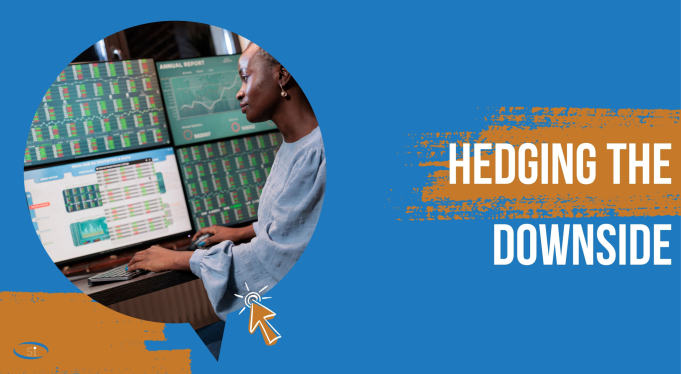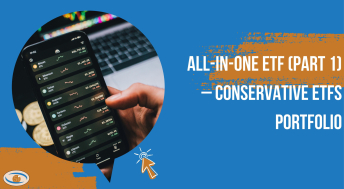As earnings season wraps up, investors who have been adversely affected may be now questioning, how they can guard against negative results. One of the most obvious risks of holding stocks is downside risk and no matter how bullish an investor may be on a company, feelings of uncertainty can always creep in. Investors should not lose too much sleep in these scenarios however, as there are options to hedge against downside risk. Two of these strategies which will be discussed are protective puts and covered calls.
To understand how these strategies work, we must first understand the basics of put options and call options. An option grants the holder the right but not obligation to buy or sell at a prespecified price known as the strike price (X). A put option grants holders the right to sell at the strike price, while a call option grants investors the right to buy at the strike price. If an option expires and it is not exercised, it will have a payoff of zero. Options will only be exercised in two scenarios:
- Call Option: Current Stock Price > Strike Price. This allows call option holders to benefit by purchasing securities below market value.
- Put Option: Strike Price > Current Stock Price. Put option holders will benefit from stock prices declining below the strike price, indicating that they have the right to sell at a price higher than what the stock is currently worth.
Since options will only be exercised when the holder receives a positive payoff, the option seller charges a premium. Sellers get to keep the option premium no matter what, and the most profitable scenario for them is when options are not exercised.
Unlock the Power of Informed Investing with 5i Research!
DIY investing doesn't have to mean going it alone. At 5i Research, we're your trusted partner in navigating the stock market. Our platform offers comprehensive stock and market research, empowering you to make smart investment decisions.
- Investor Q&A: Have burning questions? Get answers from our team of experts and fellow investors in our dedicated Q&A section.
- Research Reports: With over 60 meticulously researched Canadian stocks, our reports offer in-depth analysis, giving you the confidence to invest wisely.
- Model Portfolios, Alerts, Forums, Portfolio Tracking, and Much More...
Now that the basics are taken care off, we can look at how investors can utilize options as a risk management protection tool, starting off with protective puts. A protective put is a simple strategy as it only involves purchasing a put option for a stock that an investor holds. By purchasing a put option, it essentially establishes a price floor.
Using SHOP as an example to display how this works, let’s say an investor has purchased shares in SHOP at $100. The investor feels this is a risky investment as SHOP can tend to be volatile and they want to make sure they do not take a loss on this position. To hedge against this, investors can purchase a put option for a $5 premium with a strike price of $100. Now, let’s say the unfortunate occurs and next week the SHOP share price drops to $95 and the investor wants to exit their position. They can effectively exercise their put option which grants them the right to sell their shares in SHOP at $100 and the loss would be limited to the purchase price of the put option. In the event that SHOP’s share price was to increase to $105, the investor does not have to exercise their option and it would expire worthless. This strategy highlights how investors can essentially lock in a selling price for an investment over a specific time period while still benefitting from price appreciation of their long holdings. The following diagram provides a visual representation for how this works:
Another, more conservative option, is a covered call strategy. A covered call involves an investor who holds a long position in a stock, selling call options on a portion of the position they hold. This can be a bit confusing, but one way to intuitively think about it is that the investor is selling the right for someone else to buy their stock at a prespecified price. So, the investor who holds the stock benefits from being paid the call premium while the buyer of the option will only exercise it if the price rises. The ideal scenario for an investor using covered calls is if the option is not exercised which means they get to keep the premium and do not have to sell shares at a loss. In the event that the call option is exercised, the investor is taking a loss by selling shares below their market value, but this is partially offset by the appreciation of the holdings that the investor did not sell calls on.
To provide an example using SHOP again let’s say the investor owns 100 shares at $100 per share. The investor sells call options for $5 each on 50 of these shares with an exercise of $100. If price subsequently rises to $105, and the option holder exercises, the investor will have to sell half of their shares in SHOP to the call option holder below market price. However, the investor did not totally lose out because they still benefit from the price appreciation in the remaining SHOP position while also having received a call premium of $250. On the other hand, if SHOP’s share price dropped to $95, the options would not be exercised and while the investor’s position did decrease by $5 per share, the investor earned income of $250 on the options sold. The following example displays this concept:
We wanted to provide investors with a basic understanding of these hedging strategies and to understand that there are ways to mitigate against downside risk. While we did not touch on the exact profit structures, for investors interested in using an options strategy we would suggest protective puts. This strategy offers unlimited upside on holdings while mitigating downside risks. Covered calls are overall more complicated, along with being a capped upside hedging strategy. Both strategies provide investors effective ways to limit downside, and are good alternative strategies during periods of uncertainty.
Take Care,






Comments
Login to post a comment.